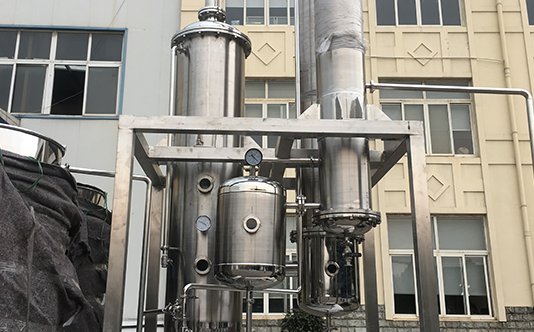Falling film evaporation involves feeding the material liquid from the top of the heating chamber of the falling film evaporator, which is then evenly distributed into each heat exchange tube through a liquid distribution and film-forming device. Under the action of gravity, vacuum induction, and airflow, the liquid forms a uniform film and flows downward. During this flow, the liquid is heated and vaporized by the heating medium in the shell side. The generated steam and liquid phase enter the separation chamber together, where they are fully separated. The steam then enters the condenser for condensation (in single-effect operation) or proceeds to the next-effect evaporator as the heating medium, while the liquid phase is discharged from the separation chamber.



The feed liquid in a falling film evaporator is introduced from the top of the evaporator and forms a film that descends along the tube wall under gravity. During this process, the liquid evaporates and concentrates, resulting in a concentrated liquid at the bottom. Falling film evaporators can evaporate materials with high concentration and viscosity.

Due to the film-like flow of the solution in single-pass evaporators, the heat transfer coefficient is relatively high.

The short residence time reduces the likelihood of material degradation, making falling film evaporators suitable for handling thermosensitive materials
Rich experience in process planning and equipment manufacturing
Customized Process Solutions
The project scope ranges from experimental testing of material parameters, to determination of process plans, to drawing, procurement, manufacturing, installation, debugging, training, and ultimately equipment delivery

Career
Professional
build Brilliant
Future
Proficient in industry/Achieving the future
